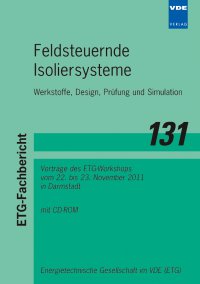Electro-thermal simulations of HVDC cable joints
Conference: Feldsteuernde Isoliersysteme - Werkstoffe, Design, Prüfung und Simulation - Vorträge des ETG-Workshops
11/22/2011 - 11/23/2011 at Darmstadt, Deutschland
Proceedings: Feldsteuernde Isoliersysteme
Pages: 6Language: englishTyp: PDF
Personal VDE Members are entitled to a 10% discount on this title
Authors:
Saltzer, Markus; Christen, Thomas (ABB Schweiz AG, Forschungszentrum, Baden-Dättwil, Switzerland)
Sörqvist, Torbjörn (ABB Sverige AB, Kabeldon, Alingsås, Sweden)
Jeroense, Marc (ABB Sverige AB, High Voltage Cables, Karlskrona, Sweden)
Abstract:
Extruded cable systems for high voltage direct current (HVDC) have been commercially in service since 1998 under the product label HVDC Light(r). The HVDC Light concept comprises both Voltage Source Converters (VSC) and cables with cross-linked polyethylene insulation. Accessories, i.e. joints and terminations, for both land and submarine applications have been developed and qualified and are now in service. HVDC Light is today a mature and well proven technology with 1500 km of installed cable length, 1000 prefabricated joints, and 400 terminations at 80 kV and 150 kV. Moreover, the third generation of HVDC Light with an operating voltage level of 320 kV is available on the market now. The technology behind the prefabricated joints is highlighted in this paper by presenting numerical simulations. A special emphasis is put on the DC stress grading principle utilized within the current designs. The HVDC Light cable accessories not only have to deal with DC, but also with transients and switching surge voltage stresses. Therefore, using the example of a 320 kV HVDC Light cable joint, simulations of DC, and switching surge voltage stresses are also presented.


